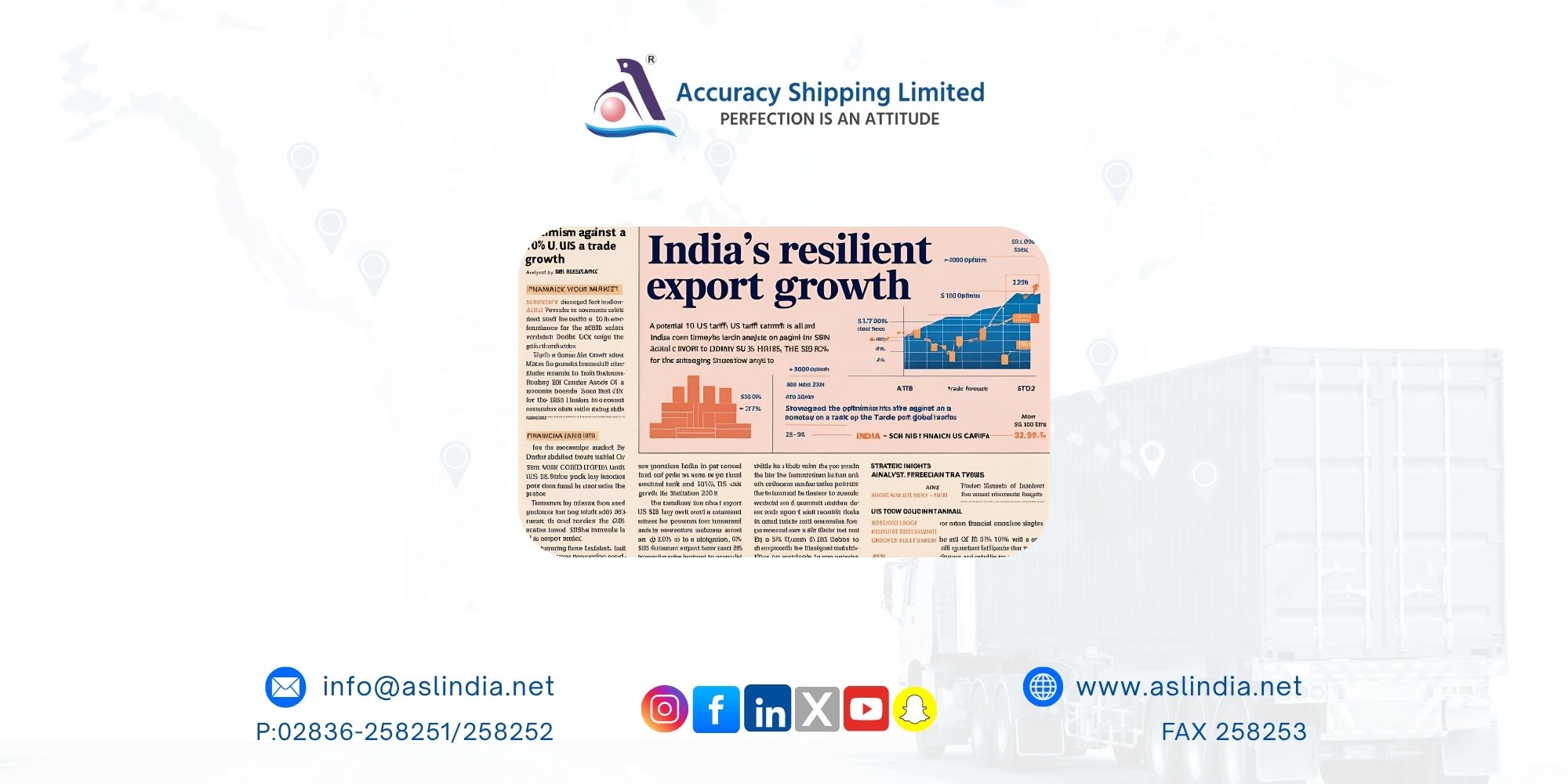India’s export growth can withstand additional 10 % US tariff: SBI Research

As India and the United States edge closer to finalizing a long-awaited trade agreement, a new report by SBI Research offers a reassuring perspective: India’s export engine is resilient enough to weather a potential 10% tariff shock from the US. The report, titled "Tariff Truce on the Horizon: India, USA Set to Seal the Trade Deal", argues that even if the forthcoming trade deal does not meet expectations or includes tariff disadvantages, India is strategically poised to navigate the hurdles and emerge stronger.
Tariff Threats Amid Trade Talks
US President Donald Trump’s insistence on “reciprocal trade” has reignited concerns of fresh tariffs on BRICS nations, India included. However, SBI Research underscores that such developments should not dampen the outlook for Indian exports. Instead, they present an opportunity to diversify and expand into new markets.
“Even if the India-US deal doesn’t come up as desired and 10% additional tariffs are imposed on India, there are various avenues for India to diversify its exports,” the report states.
Sectoral Strengths and Global Trade Realignments
Amid ongoing shifts in global trade dynamics, triggered by recent US tariff hikes on 23 countries, India finds itself comparatively less impacted. This strategic position enables India to increase its market share in sectors like chemicals, pharmaceuticals, textiles, processed foods, and agricultural goods.
India’s comparative advantage in chemicals and pharmaceuticals stands out prominently. Currently, countries like China and Singapore dominate US imports in these segments. If India captures even 2% of the US chemical import market share from these nations, it could potentially contribute 0.2% to India’s GDP. A further 1% shift from countries like Japan, South Korea, and Malaysia could add another 0.1%.
Textiles: A Sector Ripe for Growth
The textile sector, where India already holds a 6% share of US apparel imports, also shows promise. With new tariffs affecting competitors such as Bangladesh, Cambodia, and Indonesia, India is well-positioned to increase its share by an additional 5%. This could bring in a GDP boost of another 0.1%, highlighting how shifting trade dynamics can translate into tangible economic gains.
Addressing ASEAN Trade Deficit
However, not all trends are favorable. The report raises concerns over India’s growing trade deficit with ASEAN countries, which has ballooned to USD 45 billion in FY25 from just USD 16 billion in FY21. A key reason for this widening gap is the weak enforcement of rules of origin under the ASEAN-India Free Trade Agreement (AIFTA), which has allowed Chinese products to enter India indirectly.
To counter this, the report suggests tightening trade regulations and addressing tariff loopholes to curb these indirect imports.
Strategic Policy Support Needed
SBI Research emphasizes the need for India to continue negotiating for tariff rates below 25%, similar to those granted to trade-friendly nations like Singapore. This would ensure greater competitiveness in price-sensitive markets. Furthermore, it calls for robust trade and industrial policy support to leverage sectoral strengths and convert global tariff disruptions into strategic advantages.
Conclusion
India’s export economy is not just surviving global turbulence it’s positioned to thrive amid it. As the world’s trade landscape undergoes rapid transformation, India’s resilience, diverse export base, and policy adaptability could turn challenges into milestones. The SBI Research report reinforces the notion that with targeted strategies and smart diplomacy, India’s export ambitions remain on track even under pressure.







